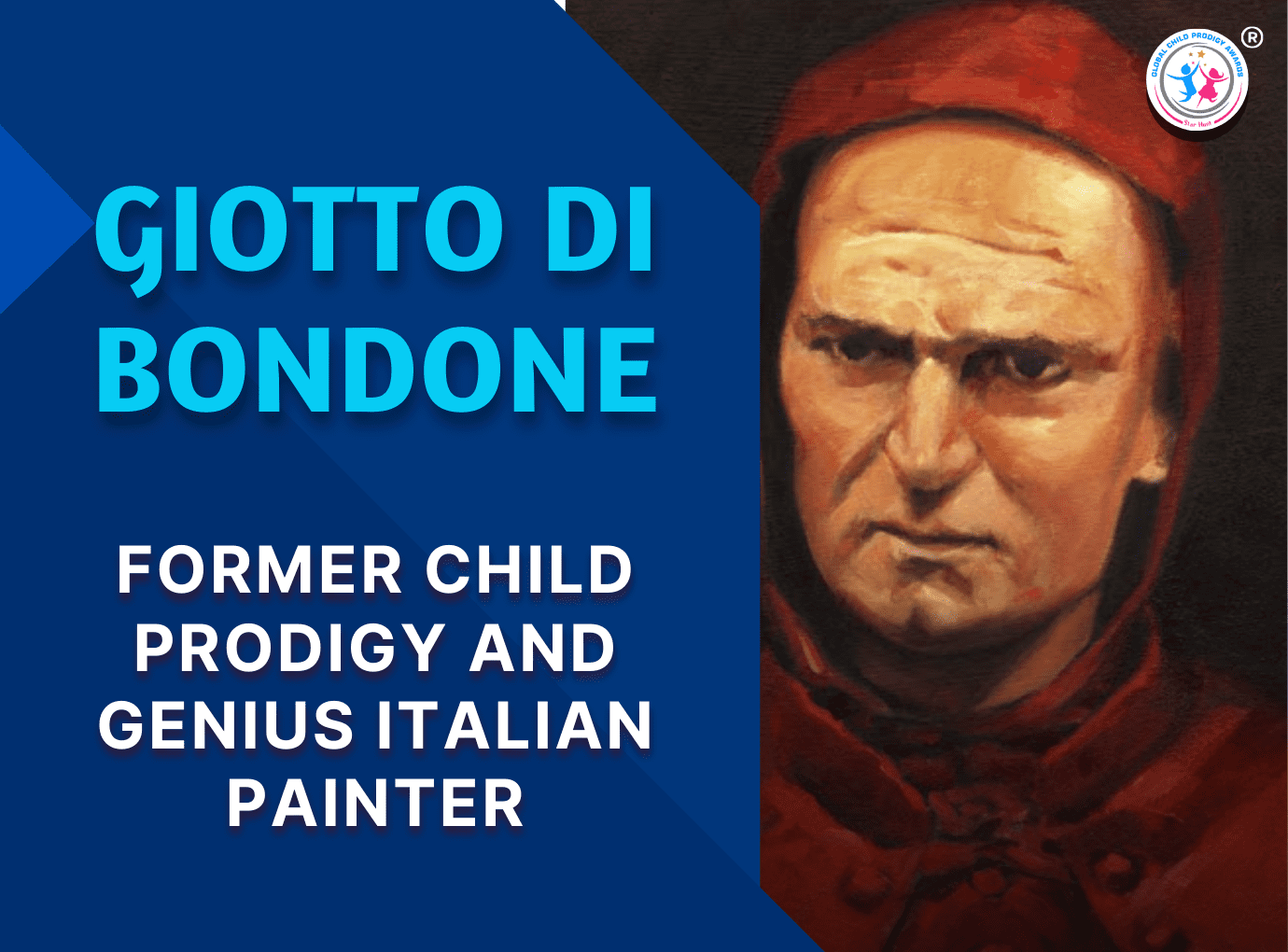Recipient of overwhelmingly universal acclaim in his day, the genius of Italian painter Giotto di Bondone is still felt today. His prodigious artistic ability was discovered when he was very young. His wealth and fame grew in leaps and bounds as his career progressed.
Commonly acknowledged as the father of the Renaissance because of his revolutionary painting techniques, Giotto di Bondone spent his life decorating the religious houses of Italy with breathtaking detail and startlingly life-like subjects. Though little of his work remains today, Giotto di Bondone’s contribution to modern art was massive, permanent, and significant.
Birth and discovery as a child prodigy
People know very little about the biographical details of Giotto di Bondone’s life. Giotto was probably born in a hilltop farmhouse, perhaps at Colle di Romagnano or Romignano. In 1850, a tower house in nearby Colle Vespignano, a hamlet 35 kilometers north of Florence, has borne a plaque claiming the honor of his birthplace, an assertion commercially publicized. He was the son of a man named Bondone, described in surviving public records. Most authors accept that Giotto was his real name, but it may have been an abbreviation of Ambrogio (Ambrogiotto) or Angelo (Angelotti).
Old stories say that while out on a hillside, di Bondone was using a sharp stone to draw sheep on a large rock. The famous painter Cimabue passed by, saw the extremely life-like sheep. He promptly asked di Bondone’s father to take young Giotto as an apprentice. His father evidently acquiesced and so began di Bondone’s artistic career.
Early Carrier
Di Bondone had the fortune of being born and living in the time of the Medieval greats. Painters Nicolò Pisano, Pietro Cavallini and Duccio, along with mosaic-worker Jacopo Torriti, were all members of the famous Italian school of the Marmorarii. Di Bondone took his cue from their techniques, and took their slowly evolving naturalism, and turned it into the humanist, emotional figures that characterize so much of the most famous Renaissance art.
Giotto traveled to Rome with the older artist before accompanying him to Assisi, where Cimabue commissioned to decorate the lower of the two churches recently built on top of each other to commemorate St Francis.
Sometime around 1290, Giotto married a Florentine woman called Ricevuta di Lapo del Pela – better known as “Ciuta”- with whom he had several children. Around the same time as his marriage to Ceuta, Cimabue left Assisi for another commission. Giotto took over his work and approached to create a fresco cycle for the top half of the walls in the upper church. Although Cimabue was Giotto’s teacher, the pupil soon usurped his master and found recognition in his lifetime.
Later years|Giotto Di Bondone
Di Bondone quickly moved away from his master’s stringently Medieval painting style, opting instead for a much less stylized and elongated technique. His brushstrokes were tighter overall, making for more realistic-looking human subjects.
Throughout his most productive years, di Bondone traveled all around Italy, painting frescoes in various religious houses. The public liked di Bondone’s fresh, new style of painting in which humans were exactly as they are.
Di Bondone spent a great deal of time studying his fellow men to accurately reproduce express a welter of emotions. Giotto intended to show humans in natural states, minus all the stiff, & religious grandeur.

An important example of this is his Ognissanti Madonna. To the modern eye, its style is not particularly remarkable. However, compared to similar works of its time, it was revolutionary.
Di Bondone continued to modify and refine his style through his middle years, completing the frescoes at the Church of St. Francis in Assisi at the end of the thirteenth century. His masterwork, the Scrovegni Chapel (often called the Arena Chapel), finished in 1305 and received widespread critical acclaim. He also completed the Santa Croce chapels in Florence during this period of his life. It was the most noted of the Peruzzi Chapel.
Advance years
Old age did not slow down Giotto di Bondone during his later years, remaining active until he died in 1337, aged 70. Di Bondone solidified his impression on the art world as his end came close. He also painted, among other works, the Baroncelli Polyptych, the Stefaneschi Triptych, and the Lamentation of Christ fresco in the church of Santa Chiara in Naples.
Di Bondone became the chief architect of Florence around 1334 and began building the Florence Cathedral. By the end of his life, di Bondone had become friends with literary greats Boccaccio, Sacchetti, and Dante. All of them featured or mentioned him in their works.
Di Bondone’s last known project was the Podestà Chapel in Florence. He died in January of 1337 and initially buried in the Church of Santa Reparata. However, the remains after excavations moved to a place of honor, near the grave of Renaissance great Brunelleschi.
Also Read: Albrecht Durer: German Renaissance draughtsman, engraver, woodcutter, and painter
Creative Content Writer at GCPA | Four Years of Experience in Content Writing
Feel free to contact me at Team@139.84.133.140

